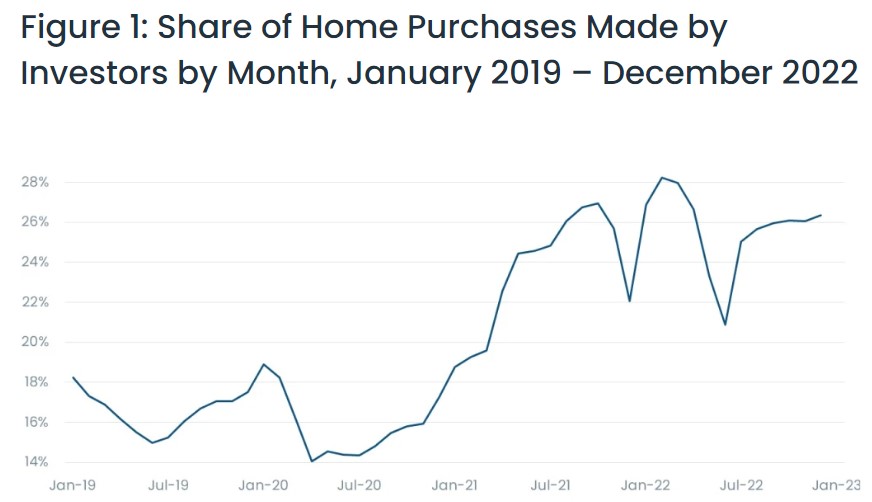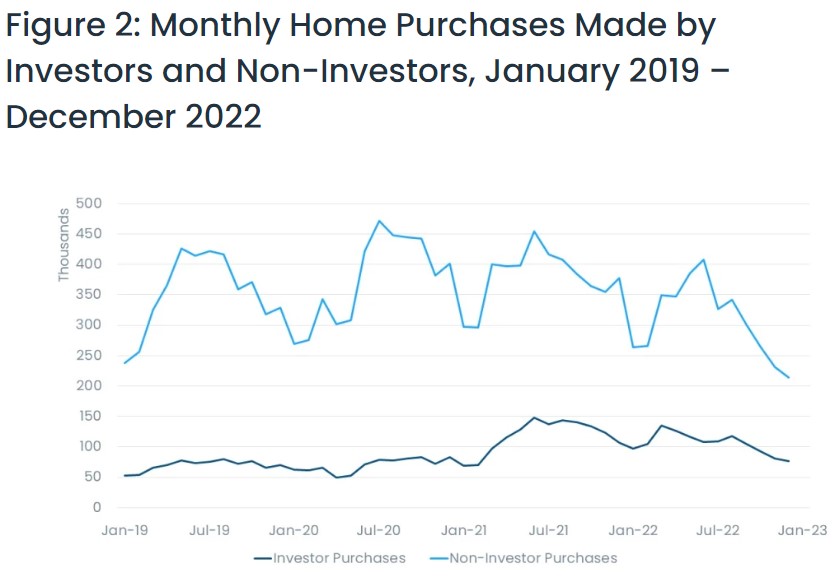 A bit of good news for homebuyers: mega investors and iBuyers are buying less homes of late as fourth-quarter results year-over-year revealed that activity fell 2% from 2021—however, this number is still elevated compared to pre-pandemic numbers.
A bit of good news for homebuyers: mega investors and iBuyers are buying less homes of late as fourth-quarter results year-over-year revealed that activity fell 2% from 2021—however, this number is still elevated compared to pre-pandemic numbers.
By December of last year, investor activity plateaued to about 81,000 purchases by investors, which was also down 25% compared to the fourth quarter in 2021. The last time the market saw these conditions was at the inflection point of the pandemic in early 2020.
This information comes from a new report from CoreLogic, who said it appears that housing demand has declined by investors and owner-occupants relatively equally, with both likely deterred by high prices and elevated interest rates.
 But looking closer, mega-investors are also dropping out of the market faster than small investors, but those small investors are making a bigger part of the investor share as time went on. The medium investor share (those with 11 to 100 properties) remained steady, at around 35% of home purchases. Large investors (those with 101 to 1,000 properties) represented 8% of all investor purchases.
But looking closer, mega-investors are also dropping out of the market faster than small investors, but those small investors are making a bigger part of the investor share as time went on. The medium investor share (those with 11 to 100 properties) remained steady, at around 35% of home purchases. Large investors (those with 101 to 1,000 properties) represented 8% of all investor purchases.
In September 2022, small investors purchased 47,000 single-family homes; a number which fell to 36,000 by December of the same year.
Large- and mega-investor activity also retreated throughout the quarter. In December, both of these groups made about 6,000 purchases. For mega investors, this is just over half of the 11,000 purchases made in September.
IBuyers made up 1.2% of all investor purchases in September, but that number dropped to 0.3% in December, a huge pullback from the record high 6% of iBuyer purchases in 2021.
The data also revealed that 15.7% of investor’s purchases were flipped from June 2022 to December 2022; a number that remained steady from last year. This is likely due home price growth decline which makes flipping a home a much less lucrative prospect.

Looking ahead, CoreLogic expects investors to stay clear of the market as owner-occupied buyers swoop in and settle between 22%-26%, mirroring those seen before the pandemic. Further, rental demand should remain strong, and home investors should be able to mitigate elevated interest rates by paying with cash or making higher down payments. The last couple of years have proved volatile, but fundamentals point to investors maintaining a significant share of the real estate market.
Click here for the report in its entirety.

 DSNews The homepage of the servicing industry
DSNews The homepage of the servicing industry









